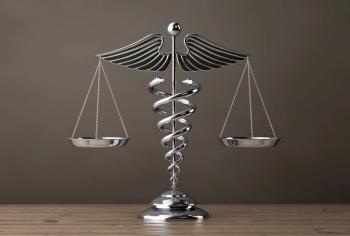
Tips from physicians on how to be productive with EHRs
Physicians tell Medical Economics their favorite tips for EHR use.
The transition from paper records to an electronic health record (EHR) system never will be problem-free, but starting off slowly and taking advantage of readily available technical support can make the process smoother. That's the advice of one physician participating in the Medical Economics EHR Best Practices Study.
START SLOW, RELY ON SUPPORT, FIND NEW WAYS TO BE PRODUCTIVE, THEY SAY
Charles Leonard, MD, is a solo family practitioner in rural Talbott, Tennessee. "Support from the vendor is probably the most important thing if you're going to get into this [EHRs]," he says. "If you're having a problem, you need an answer right away."
After completing training on their McKesson system, Leonard and his staff members decided to start by submitting only Medicare claims via the system. It was fortunate that they decided on this tactic, he says, because the practice almost immediately encountered problems, such as lost electronic remittance advices and a billing template that wouldn't accept the two-letter postal code for some states. These issues resulted in numerous rejected claims, and the delays from playing "telephone tag" with the vendor's technical support team caused cash flow problems, Leonard says.
Finding time for training also was a problem. "It's hard seeing patients and doing the training at the same time," he says. "You can't just shut down if you're in solo practice. It has to be during lunch or after hours."
Leonard says the main benefit he has seen from his EHR thus far has been in e-prescribing. "The system has the formularies right in there, so you're not having to call the pharmacy and change it or having them call and say the medication isn't on the formulary, " he says.
SPEECH RECOGNITION SOFTWARE CAN ENHANCE EHR PRODUCTIVITY
To get the most out of your electronic health record (EHR) system, consider investing in a good speech recognition software, says Louis Morrison, MD.
"I think if I can get a good dictating system, it would save some time," he says.
A consequence of the additional entry time is that Morrison no longer feels obligated to enter information while seeing patient, or even immediately afterward.
"When I started with the EHR, that was more of my focus. Looking back, I think it was a mistake," he says. "Now, we see as many patients in a day as we can, and if we can't get [their data] in right away, it's no big deal." On the other hand, waiting until the end of the day to enter data sometimes means he has to take work home.
Morrison estimates the initial drop-off in productivity cost his practice about $10,000. "But we've been getting back to normal, and we're making that up," he adds.
After starting in a large group practice, Morrison went into solo practice in 1997. Today, he and his staff of five practice in a freestanding building he owns in Plantation, Florida, where they see an average of 20 to 25 patients per day.
Training for the system consisted of a series of Web videos prepared by the vendor. Morrison says he watched only one before starting to use the system. After that, he relied on trial and error to become more proficient. Practice Fusion provides technical support, but the time difference with California, where the company is headquartered, sometimes is challenging for Morrison's practice.
His other piece of advice for practices thinking of adopting EHR technology is to investigate a wide variety of systems.
"I only looked at three systems, and in retrospect I probably should have looked at five or six to get more of a feel for what's out there," Morrison says.
Send your feedback to
Newsletter
Stay informed and empowered with Medical Economics enewsletter, delivering expert insights, financial strategies, practice management tips and technology trends — tailored for today’s physicians.








